| Product Name | GRP78 Antibody |
| Description |
Rabbit Anti-Rat GRP78 Polyclonal |
| Species Reactivity | African clawed frog (Xenopus laevis), Bovine, Chestnut Blight (Cryphonectria parasitica), Dog, Fungi, Hamster, Human, Monkey, Mouse, Rabbit, Rat |
| Applications | WB, IHC, ICC/IF, IP |
| Antibody Dilution | WB (1:1000), ICC/IF (1:100); optimal dilutions for assays should be determined by the user. |
| Host Species | Rabbit |
| Immunogen Species | Rat |
| Immunogen | Rat GRP78 (Bip) synthetic peptide conjugated to KLH |
| Concentration | 1 mg/ml |
| Conjugates |
APC, ATTO 390, ATTO 488, ATTO 594, Biotin, FITC, HRP, PerCP, RPE, Unconjugated |
| Field of Use | Not for use in humans. Not for use in diagnostics or therapeutics. For in vitro research use only. |
Properties
| Storage Buffer | PBS pH7.4, 50% glycerol, 0.09% sodium azide *Storage buffer may change when conjugated |
| Storage Temperature | -20ºC, Conjugated antibodies should be stored according to the product label |
| Shipping Temperature | Blue Ice or 4ºC |
| Purification | Peptide Affinity Purified |
| Clonality | Polyclonal |
| Specificity | Detects ~78kDa. |
| Cite This Product | StressMarq Biosciences Cat# SPC-107, RRID: AB_2119986 |
| Certificate of Analysis | A 1:1000 dilution of SPC-107 was sufficient for detection of Grp78 in 10 µg of rat tissue lysate by ECL immunoblot analysis. |
Biological Description
| Alternative Names | 78 kDa glucose regulated protein Antibody, 78 kDa glucose-regulated protein Antibody, AL022860 Antibody, AU019543 Antibody, BIP Antibody, D2Wsu141e Antibody, D2Wsu17e Antibody, Endoplasmic reticulum lumenal Ca(2+)-binding protein grp78 Antibody, Endoplasmic reticulum lumenal Antibody, Ca2+ binding protein grp78 Antibody, FLJ26106 Antibody, Glucose Regulated Protein 78kDa Antibody, GRP 78 Antibody, GRP-78 Antibody, GRP78_HUMAN Antibody, Heat shock 70 kDa protein 5 Antibody, Heat Shock 70kDa Protein 5 Antibody, HSCe70 Antibody, HSPA 5 Antibody, HSPA5 Antibody, Immunoglobulin Heavy Chain Binding Protein Antibody, Immunoglobulin heavy chain-binding protein Antibody, mBiP Antibody, MIF2 Antibody, Sez7 Antibody |
| Research Areas | Cancer, Cell Signaling, Chaperone Proteins, Heat Shock, Organelle Markers, Protein Trafficking, Tags and Cell Markers |
| Cellular Localization | Cytoplasm, Endoplasmic Reticulum, Endoplasmic reticulum lumen, Melanosome |
| Accession Number | NP_037215.1 |
| Gene ID | 25617 |
| Swiss Prot | P06761 |
| Scientific Background | GRP78 is a ubiquitously expressed, 78-kDa glucose regulated protein, and is commonly referred to as an immunoglobin chain binding protein (BiP). The BiP proteins are categorized as stress response proteins because they play an important role in the proper folding and assembly of nascent protein and in the scavenging of misfolded proteins in the endoplasmic reticulum lumen. Translation of BiP is directed by an internal ribosomal entry site (IRES) in the 5' non-translated region of the BiP mRNA. BiP IRES activity increases when cells are heat stressed (1). GRP78 is also critical for maintenance of cell homeostasis and the prevention of apoptosis (2). Luo et al. have provided findings that suggest GRP78 is essential for embryonic cell growth and pluripotent cell survival (3). In terms of diseases, GRP78 has been shown to be a reliable biomarker of hypoglycemia, to serve a neuroprotective function in neurons exposed to glutamate and oxidative stress (4), and its protein levels are reduced in the brains of Alzheimer's patients (5). Also, the induction of the GRP78 protein that results in severe glucose and oxygen deprivation could possible lead to drug resistance to anti-tumor drugs (6, 7). |
| References |
1. Cho, S. et al. (2007). Mol Cell Biol 27(1): 368-83. 2. Yang, Y. et al. (1998) J Biol Chem 273: 25552-25555. 3. Luo, S. et al (2006) 26 (15): 5688-97. 4. Yu, Z. et al. (1999) Exp Neurol. 15: 302-314. 5. Koomagi, R. et al. (1999) Anticancer Res. 19:4333-4336. 6. Laquerre, S. et al. (1998) J. Virology 72: 4940-4949. 7. Dong, D. et al. (2005) Cancer Res 65(13): 5785-91. |
Product Images

Immunocytochemistry/Immunofluorescence analysis using Rabbit Anti-GRP78 Polyclonal Antibody (SPC-107). Tissue: Hippocampal Section. Species: Mouse. Fixation: 4% Formaldehyde for 12 hours at RT. Paraffin embedded.. Primary Antibody: Rabbit Anti-GRP78 Polyclonal Antibody (SPC-107) at 1:100 for 12 hours at 4°C. Secondary Antibody: Alexa Fluor 555 Goat Anti-Rabbit at 1:250 for 1 hour at RT. Counterstain: Hoechst at 1:1000 for 10 min at RT. Localization: Grp78 staining in mouse pyramidal cell layer.. Magnification: 20x. Slice thickness: 7 microns. Courtesy of: Rachel Reith, NIH/NIMH..

Immunocytochemistry/Immunofluorescence analysis using Rabbit Anti-GRP78 Polyclonal Antibody (SPC-107). Tissue: Heat Shocked Cervical cancer cell line (HeLa). Species: Human. Fixation: 2% Formaldehyde for 20 min at RT. Primary Antibody: Rabbit Anti-GRP78 Polyclonal Antibody (SPC-107) at 1:100 for 12 hours at 4°C. Secondary Antibody: FITC Goat Anti-Rabbit (green) at 1:200 for 2 hours at RT. Counterstain: DAPI (blue) nuclear stain at 1:40000 for 2 hours at RT. Localization: Endoplasmic reticulum lumen. Melanosome. Cytoplasm . Magnification: 100x. (A) DAPI (blue) nuclear stain. (B) Anti-GRP78 Antibody. (C) Composite. Heat Shocked at 42°C for 30 min.

Immunocytochemistry/Immunofluorescence analysis using Rabbit Anti-GRP78 Polyclonal Antibody (SPC-107). Tissue: Heat Shocked Cervical cancer cell line (HeLa). Species: Human. Fixation: 2% Formaldehyde for 20 min at RT. Primary Antibody: Rabbit Anti-GRP78 Polyclonal Antibody (SPC-107) at 1:100 for 12 hours at 4°C. Secondary Antibody: APC Goat Anti-Rabbit (red) at 1:200 for 2 hours at RT. Counterstain: DAPI (blue) nuclear stain at 1:40000 for 2 hours at RT. Localization: Endoplasmic reticulum lumen. Melanosome. Cytoplasm . Magnification: 20x. (A) DAPI (blue) nuclear stain. (B) Anti-GRP78 Antibody. (C) Composite. Heat Shocked at 42°C for 30 min.
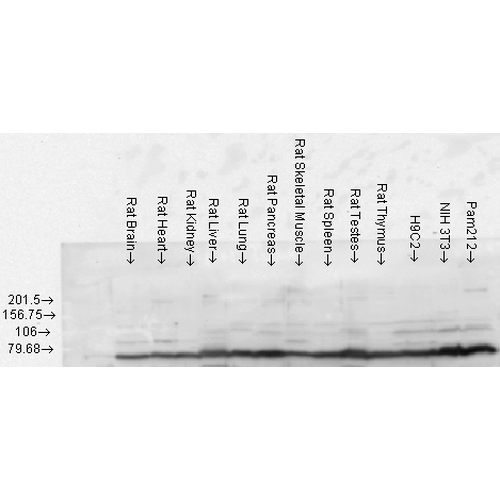
Western blot analysis of Rat Tissue lysates showing detection of GRP78 protein using Rabbit Anti-GRP78 Polyclonal Antibody (SPC-107). Load: 15 µgprotein. Block: 1.5% BSA. Primary Antibody: Rabbit Anti-GRP78 Polyclonal Antibody (SPC-107) at 1:1000 for 2 hours at RT. Secondary Antibody: Donkey Anti-Rabbit IgG: HRP for 1 hour at RT.

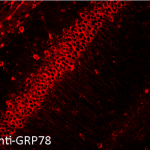
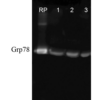
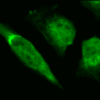
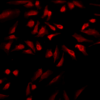
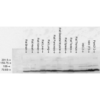


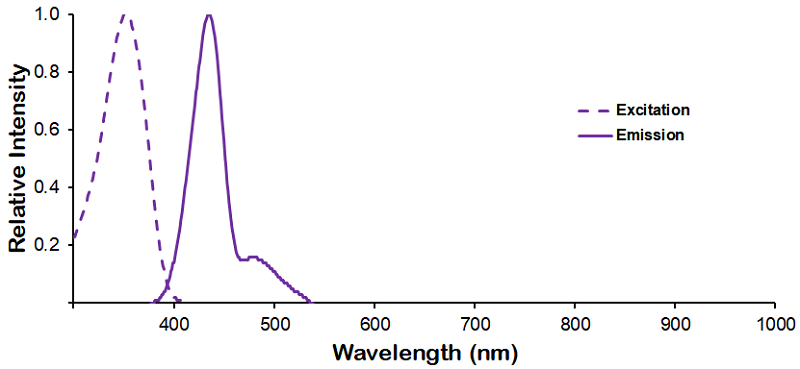
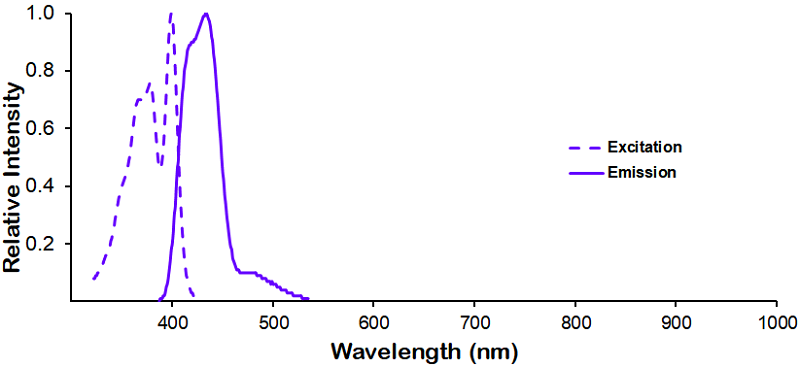
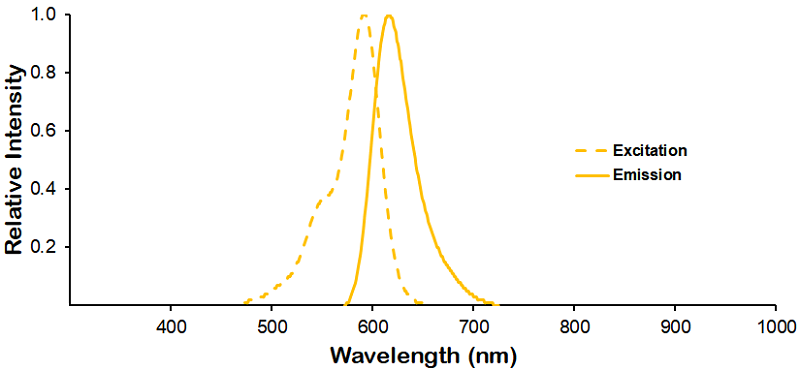
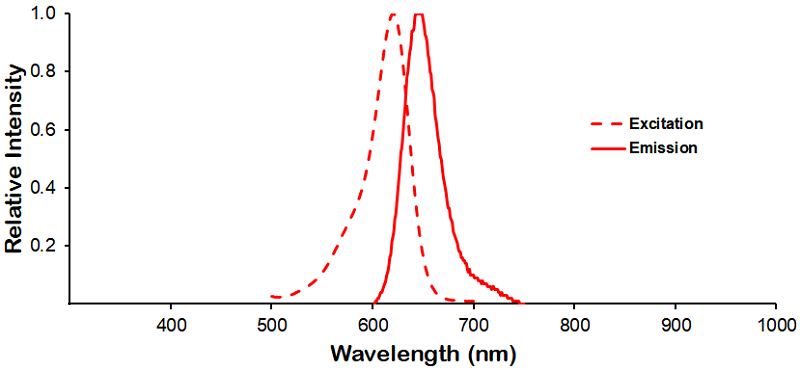
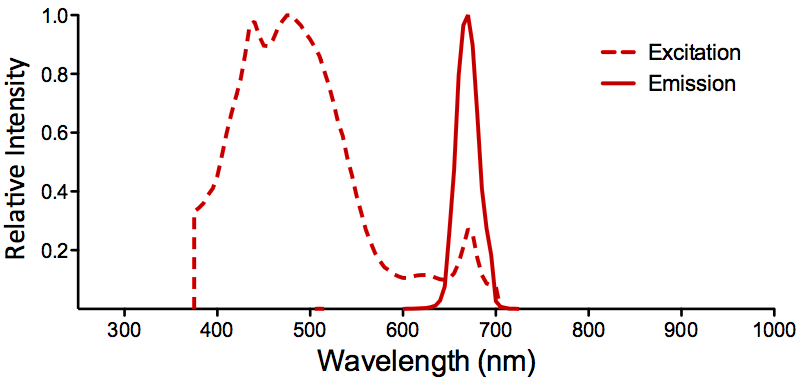
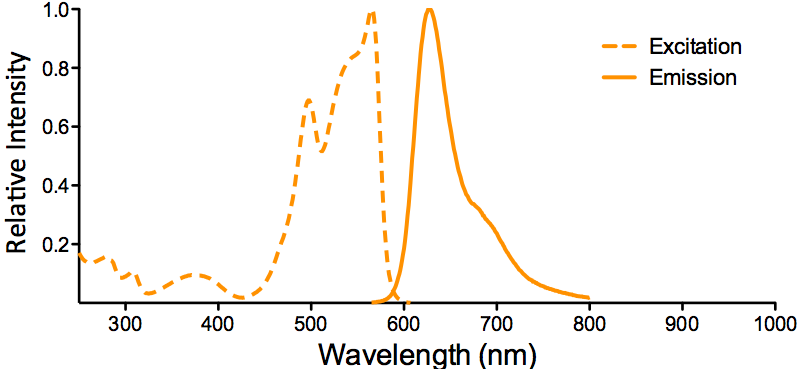
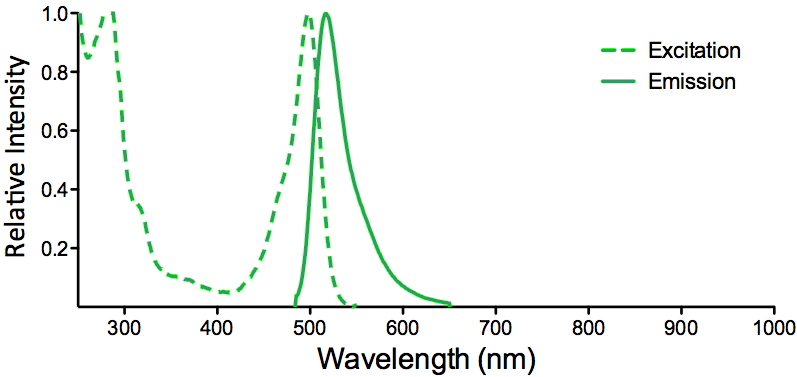
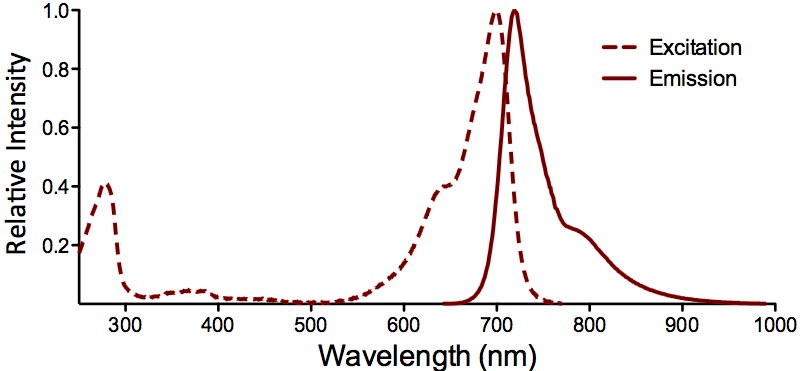
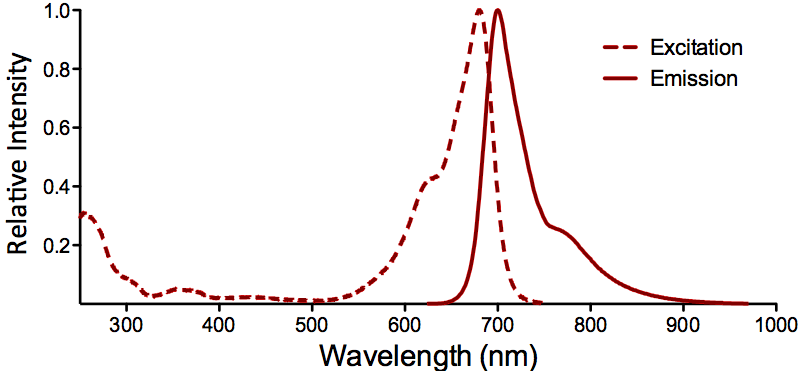
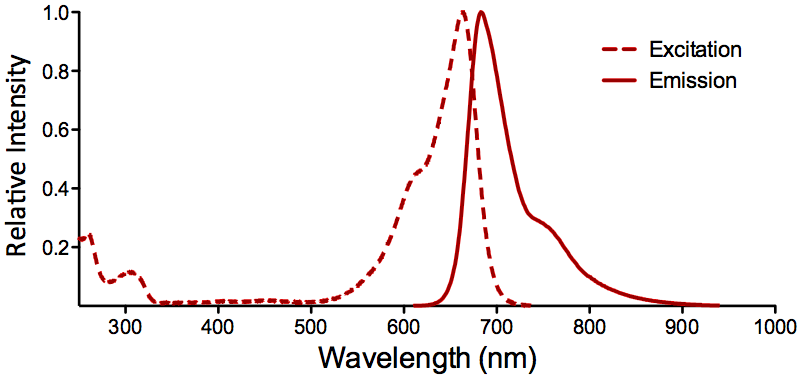
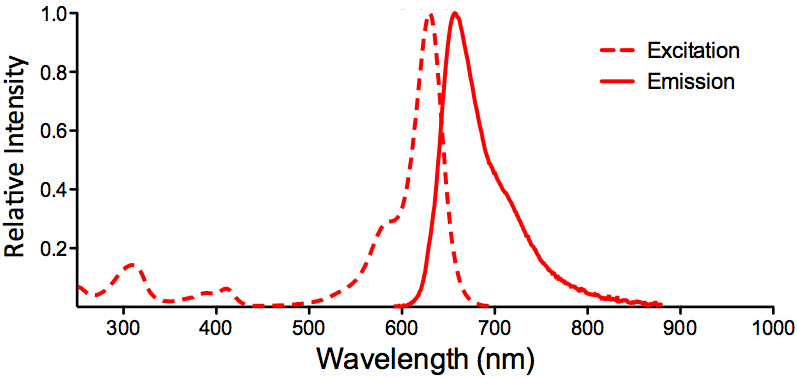
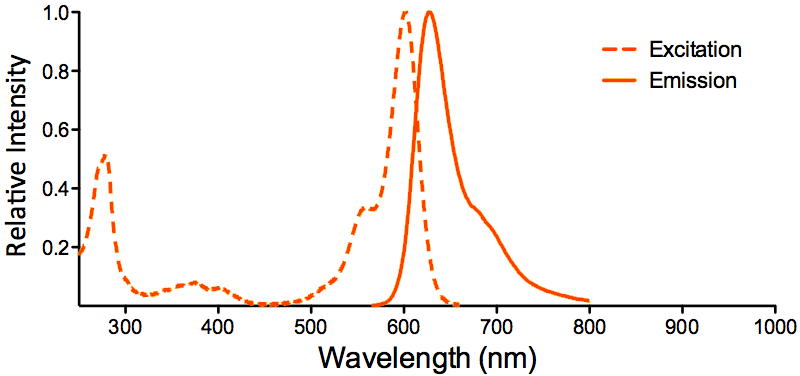
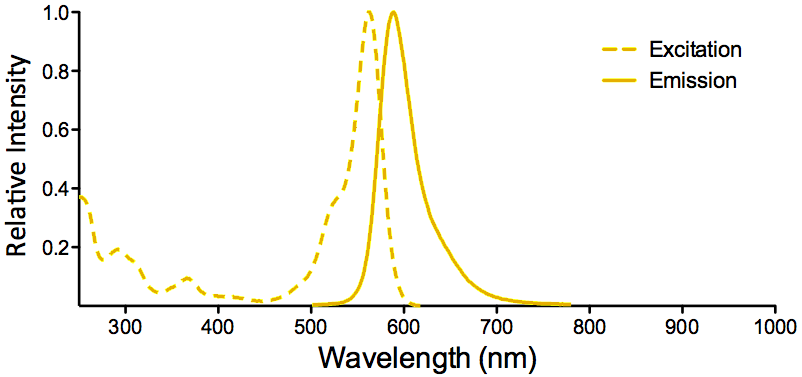
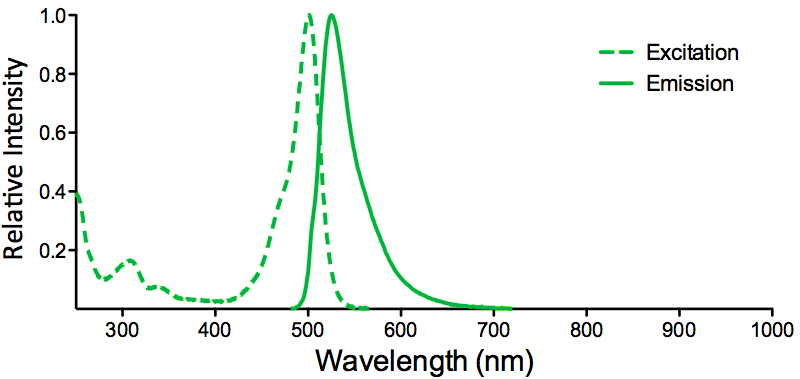
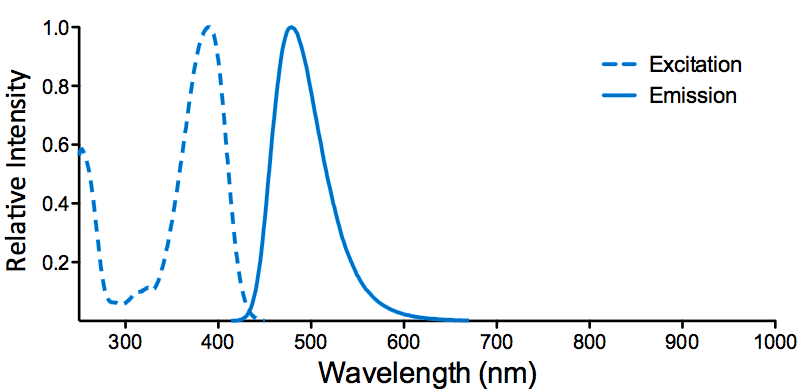
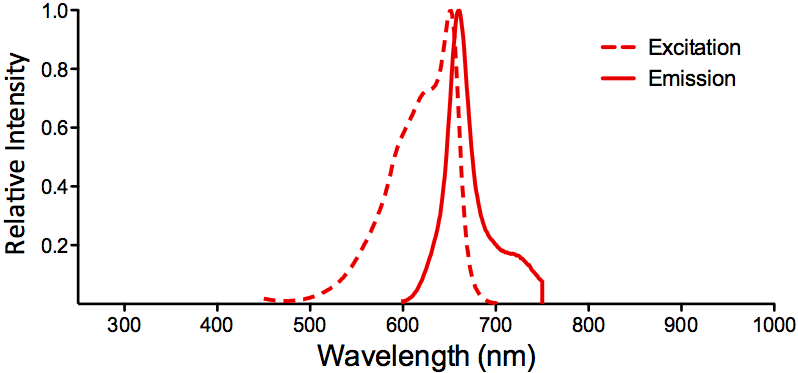
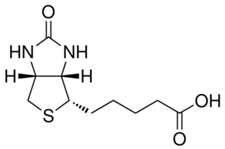
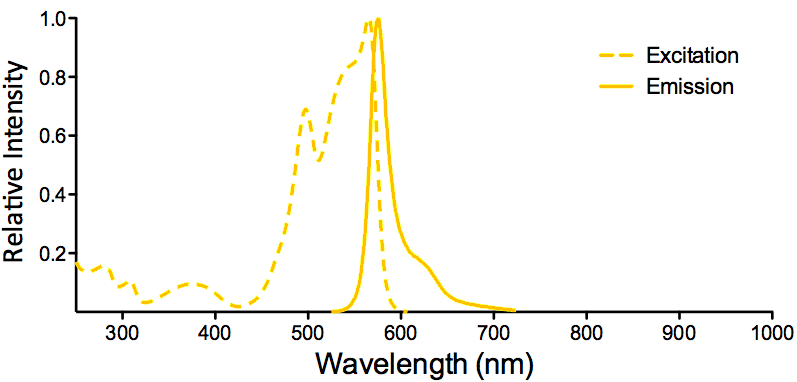
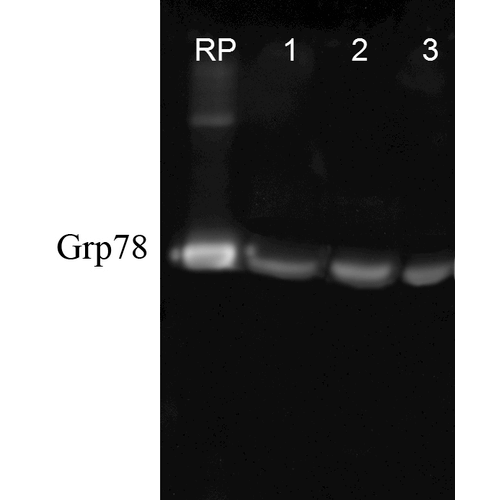
StressMarq Biosciences :
Based on validation through cited publications.